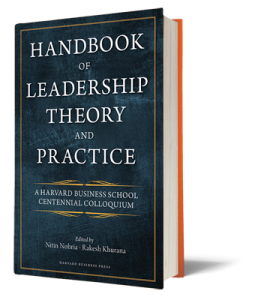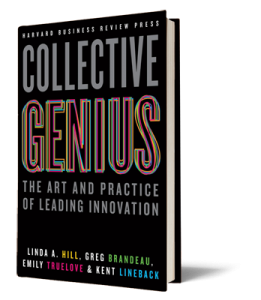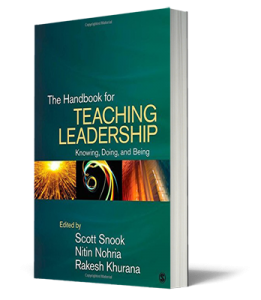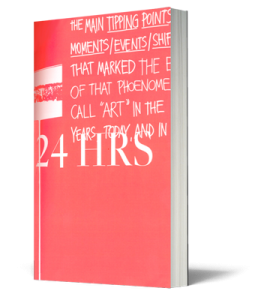 Architects Of Group Genius srl
Architects Of Group Genius srl VAT IT03988110965
VAT IT03988110965
 Architects Of Group Genius srl
Architects Of Group Genius srl VAT IT03988110965
VAT IT03988110965
Certaines des personnes les plus remarquables avec lesquelles nous avons eu la chance de travailler ont écrit quelques mots pour nous décrire. Ces mots, comme des whispers, sont des murmures discrets qui peuvent aider à comprendre qui nous sommes et saisir la valeur et le potentiel de notre pratique.









Dans l’introduction de Handbook of Leadership Theory and Practice (2010), les éditeurs Nitin Nohria (Recteur de la Harvard Business School) et Rakesh Khurana (Recteur du Harvard College) écrivent:
“This volume resulted from a colloquium that was organized as part of the centennial celebration of Harvard Business School. The centennial provided an extraordinary opportunity for the school, and for us as faculty members, to take stock of our past and to imagine our future…
“The person whose generosity and creativity had the greatest impact on our colloquium was Maurizio Travaglini. He and his associates at Architects of Group Genius created a physical and intellectual space and a program that enabled all of us to have a dialogue on leadership that felt fresh and forward-looking.”
Scott Snook (Senior Lecturer à la Harvard Business School) s’est joint à ces mêmes éditeurs, dans l’introduction de The Handbook for Teaching Leadership: Knowing, Doing, and Being (2011). Ensemble, ils écrivent:
“Behind the scenes worked a magician. The über-creative presence of Maurizio Travaglini created the physical and spiritual holding environment from which all good things came.”
Linda Hill, professeure de la Harvard Business School, mentionne Maurizio Travaglini dans son livre Collective Genius: The Art And Practice Of Leading Innovation (2014):
“Soon after he arrived at [Volkswagen], De Meo selected three junior members of his group to work with an outside firm headed by an Italian colleague, Maurizio Travaglini, to create a three-day design lab where people could come together and collaborate on a set of important marketing problems. He knew he must do more than tell people to act in new and different ways. Like the other leaders we studied, he put them in situations that forced them out of old behavior and catalyzed a new, more innovative way of working and thinking together. He’d done this at Fiat and seen, in his words, ‘people emerge, reinvent themselves, come together, and apply their talent and skills to a common end.’
They called the VW lab ‘Marketing Worx!’ and designed it to bring together staff members from headquarters and markets to collaborate on building a global brand. Instead of PowerPoint presentations or lectures, the lab would be a place for actual prototyping, testing, and arguing until the best solutions came to life.
The planning team identified several high-stakes projects for participants to work on, in a format that also allowed new ideas to emerge. But the goal went beyond specific projects. It was for people to experience and grow familiar with the innovation process of collaborating, experimenting, and integrating ideas.
De Meo recalled:
‘We decided to hold this three-day gathering inside one of the most inspiring buildings in the heart of Berlin, designed by Frank Gehry. We worked with an Italian firm to plan the session following their unique and unorthodox approach. We transformed the building into a true twenty-first-century laboratory: artwork everywhere, loud rock music signaling transitions between activities, snapshots showing the history of the automotive industry mixed in with conversations about the future of mobility. We felt that in order to unleash people’s thinking and attitudes, some sort of “positive shock” had to be provoked. Unlike in the normal daily life of the organization, everyone was being invited (or even pushed) to be a codesigner of solutions, not just an implementer of others’ ideas.’
‘…It is fair to say that people were in real shock at the beginning as they were convened inside a true laboratory, where everything was surprising: the place, the process, the roles. Marketing Worx! became a transformative experience for the marketing people in the HQ.’
By the end of the lab, De Meo felt the participants had made progress, both in their assigned projects and in the way they worked together.
Marketing Worx! showed what people can do, De Meo said ‘when they work together collaboratively, without silos and process, and with the ability and mandate to innovate.’ It was a living demonstration of what it looked like to perform as a team at a higher, more innovative level in marketing.”
À propos de notre projet “Avenida Futuro” à Barcelone
Barcelona ensaya un laboratorio de ideas para ser capital de la innovación
La Vanguardia, janvier 2018
À propos de notre Lab “Art Basel 24Hrs” à Hong Kong
Quelques pages du catalogue “Art Basel 2013″
Articles sur Harvard Business School FIELD ‘Hives’
Harvard biz school’s extreme makeover
Fortune, juin 2011
Educating Business Leaders for a Global Century
Harvard Magazine, septembre-octobre 2011
Reimagining the MBA
Alumni Bulletin, Harvard Business School, décembre 2011
Welcome to the Future
Alumni Bulletin, Harvard Business School, décembre 2011
Field of dreams, Harvard Business School reinvents its MBA course
The Economist, décembre 2011
Harvard Business School for the Facebook Age
Fast Company, mai 2012
Articles sur Harvard Innovation Lab
Harvard Launches Innovation Incubator
Harvard Business School, octobre 2010
“Hi” to the Harvard Innovation Lab
Harvard Magazine, novembre 2011
Off to torrid start, Harvard i-Lab marks its first year
The Boston Globe, novembre 2012
Take a tour of Harvard’s i-Lab
boston.com, février 2013
Articles additionnels
Unlocking the Slices of Genius in Your Organization: Leading for Innovation
publié sur Handbook of Leadership Theory and Practice
Luca de Meo at Volkswagen Group
publié sur HBS Case Collection
Un líder no es alguien al que todos le hacen caso
El Colombiano, mai 2016